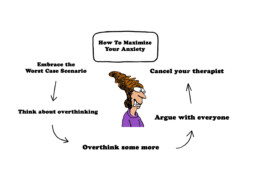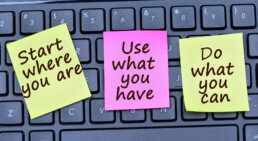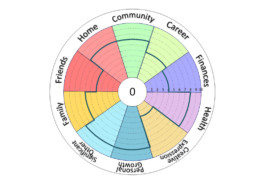Lazy?
Accompanying the hot weather of recent weeks, the little voice in my head that tells me to put things off has gotten very persistent. I was soaking some tomatoes to detoxify them and planned to soak apples afterward. That’s when that sneaky voice popped up and said, “you can soak the apples later.” Fortunately, the sensible part of my thinking caught that. Soak the apples later? All I have to do is take the tomatoes out of the bowl and put the apples into it.
As I lay on the couch reading and waiting for the dryer buzzer to go off, the load soon dries. The lazy voice suggested the clothes could wait until I’d gotten up for something more important, like a glass of water. If I did that, I’m sure the voice would come up with something new when I did get up.
That inner voice, usually known as the inner saboteur, is all about “later.” As if later things will be easier or there will magically be an increase of motivation. I admit I cannot see the future. And some tasks could be easier at a different time of day and motivation does have a way of coming and going. All that said, even when vital, I am rarely motivated by laundry.
While that little voice never goes away, it is possible to recognize it and ignore it. Or, if you don’t want to be rude, you could acknowledge it and then choose not to take its advice. When you pay attention to what your voices are telling you, seeing why you’re not getting things done is much easier. Also, when you pay attention, you take yourself off autopilot and allow your sensible part have a say too.
-Sydney Metrick
Whose Story Are You In?
It’s easy to say “be yourself,” but quite another thing to know who you truly are. You may use your name, relationship status, career, ethnicity…or you may break down the description into behaviors. We all have many stories we use to define ourselves.
People I coach often say “I’m a person who—
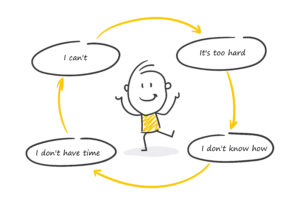 is always late
is always late- is disorganized
- can’t catch up
- procrastinates
- has a million projects and never finish any
- can’t ever find my keys
You get the drift.
It's important to become aware of the story you tell about yourself. As Henry Ford said, “Whether you think you can, or you think you can't--you're right.” So, if you’re caught in the vicious circle of “I can’t,” “it’s too hard,” “I don’t have time,” and so on; is that really the story you want to define you?
 I read about a “virtuous circle,” in which you focus on the positive and change to a self-affirming mindset. Imagine how much nicer it would be to be “caught” in a circle of “I can,” “it’s easy,” “I have all the time I need.”
I read about a “virtuous circle,” in which you focus on the positive and change to a self-affirming mindset. Imagine how much nicer it would be to be “caught” in a circle of “I can,” “it’s easy,” “I have all the time I need.”
The life you lead is based on the stories you tell about yourself. Granted some of the stories may have been learned over the years, but if the story doesn’t give you the life you want, you get to rewrite it.
-Sydney Metrick
Avoiding “Worse Case Scenarios”
Do you ever put off something you need to do because you’re thinking doing it will be difficult or unpleasant in some way? Your mind is attempting to protect you from the possibility of failing by projecting the “worst case scenario” as the likely outcome.
That story in your imagination is powerful enough to keep you from doing something you actually need to do. As the Temptations sang:
“A cozy little home out in the country with two children, maybe three.
I tell you; I can visualize it all. This couldn't be a dream, for too real it all seems.
But it was just my 'magination, once again.
Running away with me.”
Since what you imagine can seem so real, why not use it to picture positive experiences and outcomes?
Here’s one way to do that. Let’s say your task involves getting your financials ready for your tax preparer. In previous years this task has been a painful slogging eating up days of your life. Why on Earth would your imagination push you towards avoidance or procrastination?
 One solution is to imagine how wonderfully easy the task will be by approaching it in a different way. I frequently suggest people take on big tasks in little bites. So dedicate, say, 30 minutes a day for a week to get everything together.
One solution is to imagine how wonderfully easy the task will be by approaching it in a different way. I frequently suggest people take on big tasks in little bites. So dedicate, say, 30 minutes a day for a week to get everything together.
This is a two-pronged attack:
- You are using your imagination to see this job as an easy thing. And 30 minutes of any task is doable.
- Getting a chunk of work done on a daily basis gives you a feeling of accomplishment which can make the next day’s 30 minutes easier – and validating your imagined experience!
You can already imagine how great you’ll feel when you totally complete the work; why not use that tool to feel good about the process? You can enhance the experience in any way you want.
Step into that picture and claim it as real.
The more you start thinking positively, the easier things become.
- Sydney Metrick
If Not Now, When?
Are you familiar with Dr. Seuss’s, “The waiting place?”
“Waiting for a train to go or a bus to come, or a plane to go or the mail to come,
Or the snow to snow or waiting for a Yes or a No, or waiting for their hair to grow.
Everyone is just waiting.”
Are you waiting for the time to be “right” to start a task or a project, especially a big project or a less than exciting task? The truth is when a project feels too big to know where to start, or a task is tedious, the time will only be right when you actually decide to start.
There are many reasons for procrastination and only one solution.
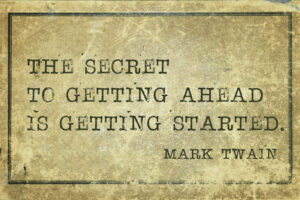 Starting.
Starting.
Fear not. Starting is not the same as finishing, and knowing the best place to start is not necessary. Starting just means taking one small step…then another.
Sometimes a project or task can be easier with chunking. That means breaking it into either time chunks, e.g. “I will spend ten minutes on this,” or chunks of items or work. For example, just go through one pile, or writing one page.
If “now” really isn’t the ideal time to start, then schedule a “now” and stick to it!
You may be familiar with the Chinese proverb that says: “The best time to plant a tree was 20 years ago. The second-best time is now.” So, forget about waiting.
-Sydney Metrick
A Winner Is ...
… just a loser who tried one more time. George Leonard, in his book Mastery, reminds us that it may take many steps to arrive at a destination. That might look like two steps forward and one step back, or even one step forward and three steps back. The key is realizing the steps backward or even the long plateaus with no advancement are not reasons to quit.
People with attention deficit disorder are likely to try things that are new and exciting, but when they become boring or difficult, well... I took lessons in guitar, clarinet, piano, and flute and can play nary a one because I gave up at the plateau. If I realized then that a plateau was a great time for integration, I might play a musical instrument today.
Working towards goals may mean developing new habits that are not immediately comfortable. A plateau gives you time to acclimate and work that habit into your mindset as well as your routine.
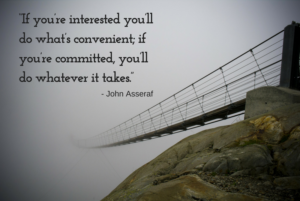 Back steps are opportunities for evaluation. You might check to see if you’re on the “right path” for the “right reason,” and using the “right approach.” Everyone finds themselves doing something that doesn’t feel great. That’s a time to check in with your what, why, and how of the thing to make sure you are being true to your values.
Back steps are opportunities for evaluation. You might check to see if you’re on the “right path” for the “right reason,” and using the “right approach.” Everyone finds themselves doing something that doesn’t feel great. That’s a time to check in with your what, why, and how of the thing to make sure you are being true to your values.
Think about a goal you have for 2021. How committed are you to achieving it? Remember the quote by John Assaraf: “If you’re interested, you will do what is convenient; if you’re committed, you’ll do whatever it takes.”
Need help? Here I am.
- Sydney Metrick
Failing Successfully
Did you know that failure is an “Essential Prerequisite” to success? At least, that’s what scientists who studied a massive amount of data concluded and Scientific American reported on.
Chances are you’re familiar with Kentucky Fried Chicken, now known as KFC. Did you know that Colonel Harland Sanders, the Kentucky Colonel whose face graces every “finger lickin’ good” bucket of chicken, was nearly a lifelong failure? At age 65 he took a stand for his famous chicken recipe and was rejected by over 1000 restaurants before it finally sold. The rest, as they say, is history.
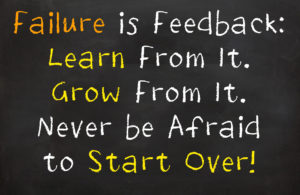 Jim Carrey, J.K. Rowling, and Oprah Winfrey are others who experienced failure and hardship before making it. It wasn’t luck that brought them to their successes. Success comes from several factors: learning from what works and what doesn’t, making corrections, and committed perseverance. You may have previously read one of my favorite quotes by John Assaraf, “If you’re interested, you’ll do what’s convenient; if you’re committed, you’ll do whatever it takes.”
Jim Carrey, J.K. Rowling, and Oprah Winfrey are others who experienced failure and hardship before making it. It wasn’t luck that brought them to their successes. Success comes from several factors: learning from what works and what doesn’t, making corrections, and committed perseverance. You may have previously read one of my favorite quotes by John Assaraf, “If you’re interested, you’ll do what’s convenient; if you’re committed, you’ll do whatever it takes.”
Failure gifts us with lessons and direction. Make sure your failures don’t lead you to a seat on the pity pot. When an attempt fails, figure out how and why, don’t be afraid to ask for support, and try again. That’s something else those scientists realized, success became more likely – and came more quickly – to those who got right back to work. That seat on the pity pot is more than unproductive, the longer you sit on it the more likely your next attempt is also going to fail.
The 5 Second Procrastination Cure
A friend recently told me she heard about a five second rule that supposedly helps you fight the urge to procrastinate - a procrastination cure, apparently. A bit skeptical, I procrastinated on finding out more about the rule. Eventually, I got around to learning the rule. It goes like this: when you tell yourself it’s time to [insert chore here], you have five seconds before your brain says, “ah forget about it.” If you count backwards from five to one, your brain is supposed to stay motivated and get you going. Mel Robbins, author of this 5 Second Rule, explains it all in her blog The Five Elements of the 5 Second Rule.
Maybe this will work for you. If so, great! If not, no worries. There really are no solid “cures” for procrastination. Some people argue that the only reason people procrastinate is because of stress – we want to avoid the bad feeling associated with the task. However, there are other reasons we put off tasks:
- Not knowing where or how to start.
- Values conflict.
- The task requires more time than is currently available.
- An emergency or other distraction comes up between preparing for and beginning the task.
Your procrastination may have valid reasons; just make sure you address those reasons – figure out where to start, schedule the time necessary, etc.
 However, when you’re running behind and need to finish something that you have been avoiding, here are some solutions you may find helpful.
However, when you’re running behind and need to finish something that you have been avoiding, here are some solutions you may find helpful.
- If keeping your word is important to you, promise someone that you will complete the task – and have them hold you accountable.
- Pair the task with something you enjoy such as listening to music or having a friend over to provide encouragement.
- Work on the task for a manageable chunk of time. It is amazing what you can do in 20 minutes.
- Schedule it before something you’re looking forward to doing, e.g. Go for a bike ride as soon as you finish ten minutes of filing the papers on your desk.
You might even decide to work with a coach.
-Sydney Metrick
Let’s Find Your Motivation
Do you sometimes find it hard to get motivated for an important task? Could it be you don’t find the task interesting?
There are two types of motivation—internal and external. When you do something to receive a reward or avoid some sort of “punishment” it’s because you’re externally motivated. The problem, in this case, is that when the motivator is no longer there the motivation wanes.
On the other hand, when you are internally motivated to perform a task you likely find it interesting, enjoyable, or satisfying in some way. So, what if, say, organizing a room is not fun or interesting to you. How could you get yourself to do it?

Possible solutions:
- Pair the task with something you enjoy. For example, put on 20 minutes of your favorite music and organize during that time.
- Get a body double. That’s someone who will sit with you, or even help out, while you work on your task.
- Look at your values. If you value integrity, tell someone what you’ll be doing and when you’ll do it. Then, have them ask you how it went.
- Perhaps you value competition. Set up a game with a friend or family member to see who gets their task accomplished first.
There are many ways to make your task interesting or meaningful. A good place to start is with your mindset; “I get to” things tends to be much more fun than “I have to” things.
-Sydney Metrick
How Does Your Wheel Roll?
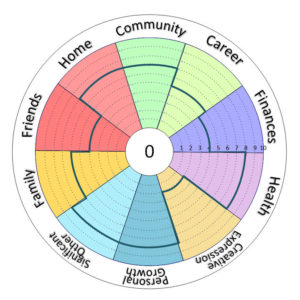 Life balance. What does that even mean? Can you have a balanced life? If so, how?
Life balance. What does that even mean? Can you have a balanced life? If so, how?
First, how’s your life at the moment? There are several assessments to see if you are in or out of balance. Many coaches use a tool called the “Wheel of Life” for this.
Most of us express our thoughts, time, and energy in eight to ten different areas. The “Wheel of Life” gives you a way to rate your life in each of these areas. Personally, I use the following categories with my clients:

- Friends
- Personal Growth
- Family
- Community
- Health
- Career
- Home
- Finances
- Significant Other
- Creative Expression
Feel free to substitute school for career, or whatever other changes will accurately reflect the key components of your life. Once you have your categories, assess your current level of satisfaction in each area on a scale of 1-10. Your consideration is based on what that category means to you. For example, in the Significant Other category: you have a significant other and it’s a good relationship, so you give yourself a 9; or, you don’t have a partner and don’t want one, that can also be a 9. But if you’re not happy with your relationship, perhaps you give yourself a 3 or 4.
 This person is fairly pleased with their relationships with their home, community, health, significant other and personal growth. They are not satisfied with the relationships they have with friends, career and, finances, which indicates they would benefit from setting goals, deciding what is realistic. Family is another area they may wish to address.
This person is fairly pleased with their relationships with their home, community, health, significant other and personal growth. They are not satisfied with the relationships they have with friends, career and, finances, which indicates they would benefit from setting goals, deciding what is realistic. Family is another area they may wish to address.
Once you have all your numbers you can see if you’re balanced, such as all numbers fall between 7 and 9, or all between 4 and 7. Both ranges show balance, but only that first range shows satisfaction. Any area that indicates a satisfaction level of five or less would benefit from attention to bring it up. This means setting goals, creating plans to achieve them, scheduling and fulfilling action steps.
Do not expect to maintain balance once you reach it. Life has a way of changing and you can get out of balance without noticing. Personally, I re-do my wheel at the turn of every season.
-Sydney Metrick
A “Kick in the Butt”
On a scale of 0 to 100, what percentage of what you say you want to “do,” “have,” or “be” actually comes to fruition? There is a big difference between saying what you want for yourself and taking the steps to make that your reality.
“The secret of success without hard work is … still a secret,” says Ivan Misner, founder of the world’s largest business networking organization, BNI.
As far as I know, fairy godmothers, genies, and elves exist only in fairy tales, so your successes are only to come about with commitment and efforts. That commitment and those efforts are stronger when you can clearly define your intentions and goals. Writing can help you crystallize your thinking:
- First, write down a specific goal you wish to achieve. Let’s say you want to be able to hold a simple conversation in Spanish by the end of the year.
- Second, what steps will you take to reach that goal? So, spend 30 minutes a day studying Spanish.
- Third, add what’s in it for you to achieve that goal. You won’t (overly) embarrass yourself when you are in Spain for business next year.
- Finally, what would your life be like and how would you feel if you “flaked.” Like an idiot in front of your colleagues.
 This is a good start, but to increase your likelihood of success, share goals and intentions with others. Let people around you know what you’ll be doing. The best person to tell is one that will hold you accountable. This is what a coach does. A coach helps you clearly define what you want, break the goal into manageable action steps, encourages you to calendar the steps and then, regularly checks in with you to see how it went and make any adjustments to the process.
This is a good start, but to increase your likelihood of success, share goals and intentions with others. Let people around you know what you’ll be doing. The best person to tell is one that will hold you accountable. This is what a coach does. A coach helps you clearly define what you want, break the goal into manageable action steps, encourages you to calendar the steps and then, regularly checks in with you to see how it went and make any adjustments to the process.
As a coach, I always ask clients to design how they like me to interact with them. Much of the time the answer is, “give me a kick in the butt.” That is so much easier when I know what I’m kicking you towards.
-Sydney Metrick
Re-Evaluating

This past Fall we said goodbye to California and moved to Mexico. Oh, and got married, too. For a person like myself with ADHD, the amount of details was overwhelming. Ordinarily, I would have said there is no way I could manage all the research involved with selling most of our possessions and our house, getting visas, planning a drive, and all the other details.
Yet, I did it.
We had decided to make this move a while ago, and now was the time. I gave up what I thought I was capable of and did what I needed to make the decision a reality.
Mexico is wonderful. But it is very different from California. Plus, we had to discover places to shop, eat, get things fixed. We needed to find doctors, dentists, lawyers, and friends. Think all that was challenging? Really, not so much. I know I am more capable than I thought I was. I can do without some of the things I thought were necessary (like Trader Joe’s), and I can learn just about any new thing with time and practice.
Perhaps you are holding some limiting stories about your capabilities and options based on your past or other people’s opinions.
The new year is a good time to re-evaluate your life. What from 2017 do you want to let go of? What will you develop further?
And the day came when the risk to remain tight in a bud was more painful than the risk it took to blossom.
- Anaïs Nin
- Sydney Metrick
Wouldn’t it be Nice if…
Let’s play a game. It’s called “Wouldn’t it be nice if…”
Here’s how to play-- think of something specific you want to do, have, or be. Add that to the framework. For example, “Wouldn’t it be nice if I got eight hours of sleep,” or “Wouldn’t it be nice if it was easy for me to prioritize.”
Sure, there are some things that would be nice … winning the lottery, finding the fountain of youth, having a chauffeur. But those may be just a bit beyond your reach. However, sufficient sleep or being able to prioritize are totally doable. That is if you really want them and are ready to make it happen.
John Asseraf said, “If you’re interested you’ll do what’s convenient; if you’re committed, you’ll do whatever it takes.”
Sometimes it’s easier to know what you don’t want than what you do want. So get clear about what you really want. Can you imagine being the person who does what it takes to have what you say you want?
- Do you believe you can have it, that you deserve to have it?
- Do you really want it or just think it would be nice?
- Finally, are you ready to do whatever it takes?
Let’s look at your answers:
- If the answer to #1 is “not sure” or “no” you might want to start smaller and work your way up to your bigger, ultimate goal.
- How about #2? Do you think you “should” want to do, have, or be whatever you have in mind? For example, you have friends with new cars and you have an old Toyota that you actually love, but wonder what kind of statement it makes about you. I am anti-should, so don’t let others tell you what you feel. On the other hand, it never hurts to get an outsider’s opinion on how your image is impacting your reputation.
- Number #3 is easy. If you’re ready, it’s good to have support. Here’s where I can help. As a coach, I help you clarify your goals, create realistic action plans, schedule the steps, work through obstacles, and get results.
Routine or Ritual?
Habits and routines created with intention can make life easier in so many ways. I don’t mean the unconscious habits of going for a snack when you’re bored or throwing clothes on the chair rather than hanging them up. Those are the habits that most people say they’d like to change.
What I’m talking about are the productive behaviors you want to change the problem behaviors to. I’m also including other positive routines and habits – such as regular sleep and wake time, paying bills every Friday, that kind of thing. For example, I have a morning routine that goes breakfast, exercise, shower and dress, work. Sometimes I have an early client and have exercise or shower after that. The actions of the routine may get shuffled but not neglected because they’ve become habitual.
Now with a ritual you are adding an additional element—the conscious intention of the behavior helping you be more of the person you wish to be. Here’s an example that uses the process of ritual:
Intention: Organizing a space in which you can find things, get things done, and keep what’s important to you safe. Hold the intention of creating your space as a sanctuary where you can be comfortable and focus on what is meaningful.
Planning: Schedule a block of time to look at all of the things in your space. During this time, you will make a decision about every item in your space. If something has no use or meaning, or is no longer important to you, consider letting it go. Some things will be tossed, some given away, and some perhaps stored elsewhere because they are rarely used. Next, look at what will stay – the things you want to keep and use all the time. Think about where it makes the most sense to put the items you’ve decided are special to you and support your intention.
Preparation: Your first action step is the clearing and de-cluttering. A cleansing process is often done to make way for something new. After clearing, find the right kinds of containers for the things you have. Now, take a break.
Manifestation: Set aside a morning or afternoon for the ritual. Enter the room and close the door. Sit down and focus on your intention.
Select one type of object—say books. As you recognize in what way they reflect who you are and what’s important to you, you can claim them as power objects. Put them in the areas you’ve decided upon.
To close the ritual, imagine doing what you will be doing in each area of the room. Do you feel better, worse or, the same as before? Make sure you feel good everywhere. Take a photograph of your space.
Integration: Put the photograph on the wall or in your journal. Use it as a daily or weekly reminder as perhaps the first step of a maintenance ritual.
What's Your Story?
When I was studying to be a coach, I was introduced to a book called, Taming Your Gremlin.
No, it is not a manual for those who have mythological pets. Rather it addresses all of us who have that voice in our head that says things like, “you can’t…,” “you’re not…,” or “you should.” Despite the fact that the voice is likely disparaging, we have a tendency to listen and believe what it says. We are believing that story as if it were fact.
Belief. That is the key here.
You may have heard the quote by Henry Ford that goes, “whether you believe you can do a thing or not, you are right.” Fortunately, because we have the ability to learn and change we can change our beliefs. We can create new “mindsets.” Our mindsets are beliefs that determine how we deal with life and make choices.
Do you feel like your brain is holding you back? Or, maybe, it’s not that obvious. Have you ever felt like no matter what you cannot get past this certain place? That is still your mindset – that little voice telling you that you cannot do better. If you want to make changes in limiting mindsets, the first step is to recognize that there is a self-limiting story that’s running the show. The next step is to consider re-writing the story.
Yes. You can do it. It takes practice to get the new story to take hold but it’s worth it. For example if you have a story that you “have to” do something and you find yourself resisting, try thinking that you “get to” do it. Or when you hear yourself thinking “I failed miserably with…” how about thinking, “I learned what works and what doesn’t so I can do things differently the next time.”
On the other hand, “Argue for your limitations and sure enough they’re yours.” Said Richard Bach in Jonathan Livingston Seagull. You’re so much better than that.
Why play small when you can fly?
Do Olympians Have Better Brains?
You bet! Numerous studies have shown that exercise not only improves cognition but also helps brain cells regenerate.
So what does this mean for you? Walking, swimming, bicycling and other forms of aerobic exercise will not only help you look and feel mighty fine, but improve your memory, processing speed and executive function now and for years to come.
You already know that positive habits and routines help you function more effectively. So scheduling regular, daily exercise…even ten minutes on a stationary bike or treadmill every morning… can boost your brain better than chugging some java and give you a better brain over time.
If you’re already going, “yeah but” followed by your lack of time or some other excuse (I mean reason) then consider parking your car farther from location destinations, taking stairs rather than elevators, or some other creative way to get the moves in.
Check out a recent Scientific American article for some eye-opening details:
www.scientificamerican.com/article/how-does-exercise-benefit-cognition/
Talk to me about replacing "bad" habits with ones that are beneficial.
Three Tips to Avoid Late Fees
Do you ever procrastinate on paying bills? Solutions exist.
The List
First make a list of all your monthly bills and their general due dates. Note that some may be due weekly, while others are monthly or quarterly. Some bills will usually have due dates early in the month while others will be due later in the month. Organize your bills in the order that they need to be paid.
Pay Date versus Due Date
This is a place where lots of people screw up. Whether you pay electronically or send in a check, there is a time span between when the payment is made and when it arrives. If you pay online, your bank will usually have a note as to how many days it takes for the money to be transferred. If you put a check in the mail it could be anywhere from two days to who knows when. Scheduling pay dates a week before due dates is generally a safe bet.
Alert, Alert
If you’re income varies, have you noticed that institutions don’t like it when you try to pay a bill with money that doesn’t exist? Alerts can help with this. With online banking you can set alerts to send you an email with your balance daily or weekly. They can also let you know when a check posts, when you have a low balance threshold, and more. This is great information whether you are paying all your bills yourself or using automatic deductions to handle the job.
Finally, tips are only good ideas without implementation. So schedule a chunk of time in your calendar each week to be used for bill pay. Make it an appointment. If something that feels more urgent comes up, make sure to reschedule to a time within 24 hours.



